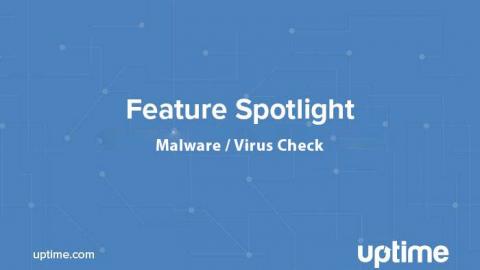Feature Spotlight: Malware / Virus Checks
Malware / Virus checks from Uptime.com checks your site against two major malware databases. Malware is any type of unwanted or malicious code. Malware includes viruses, which are malware designed to replicate and spread, as well as spyware, adware, trojans and more. A Malware / Virus check uses the Google Safe Browsing List and the Yandex Safe Browsing List to determine if your site has malware.





